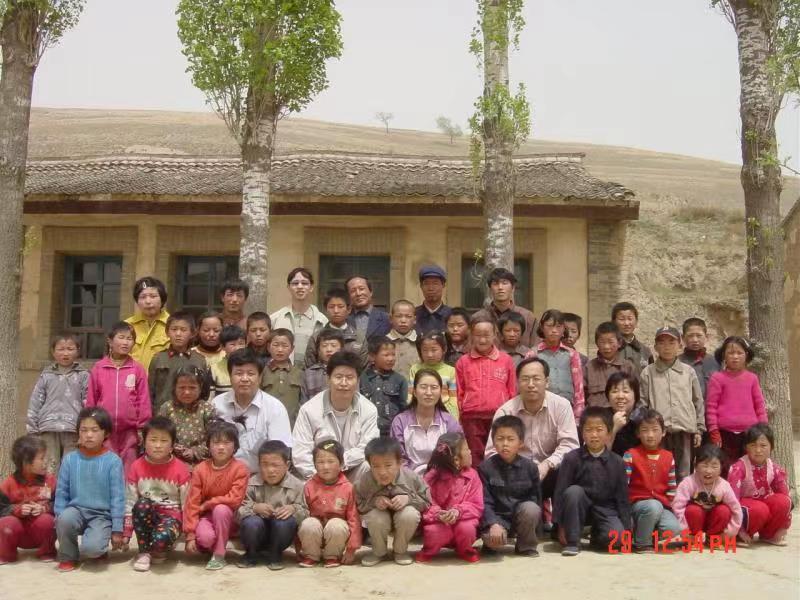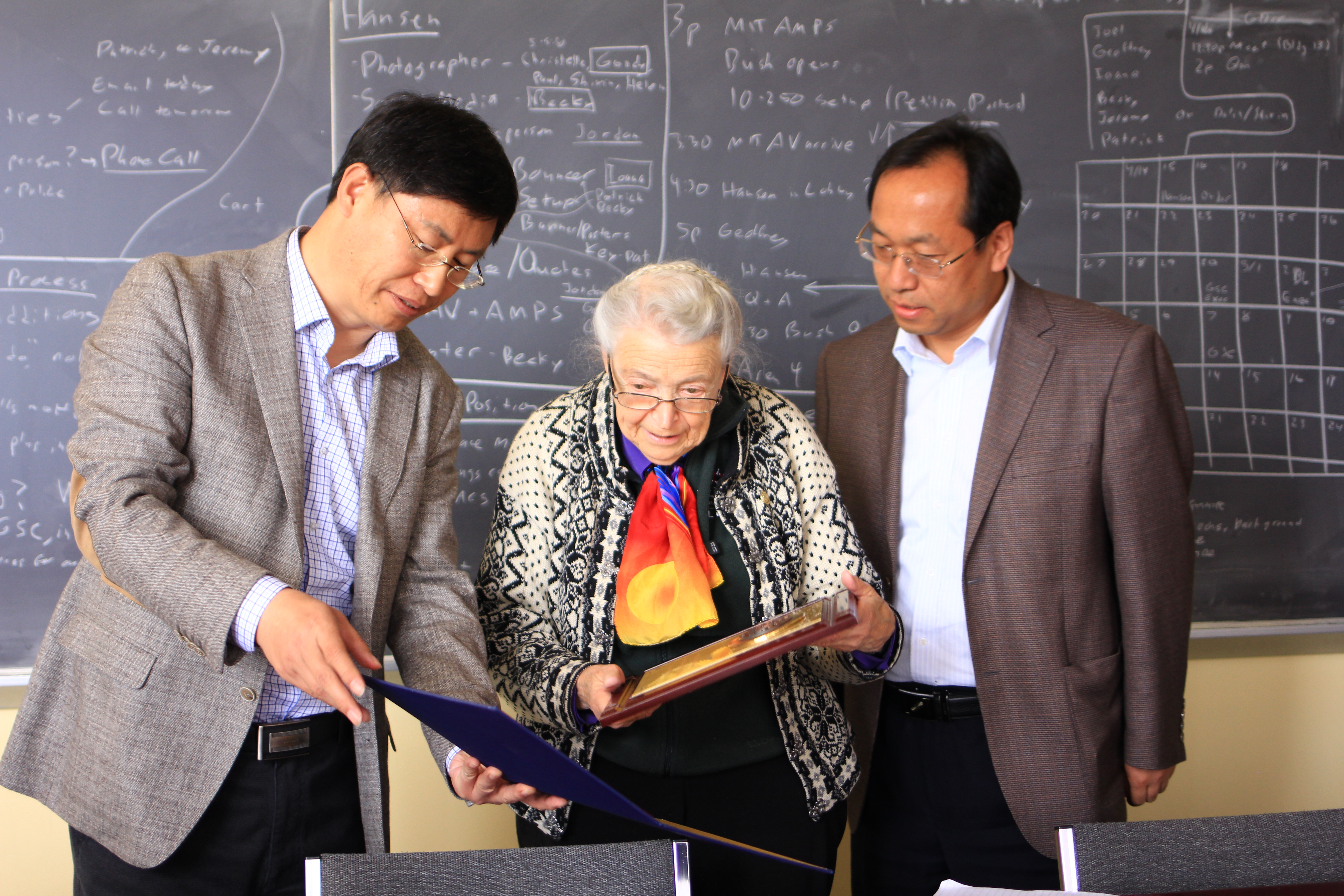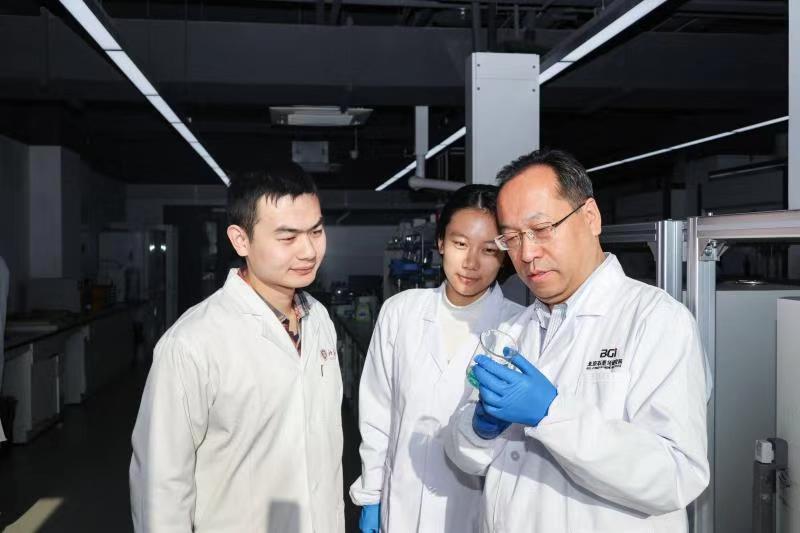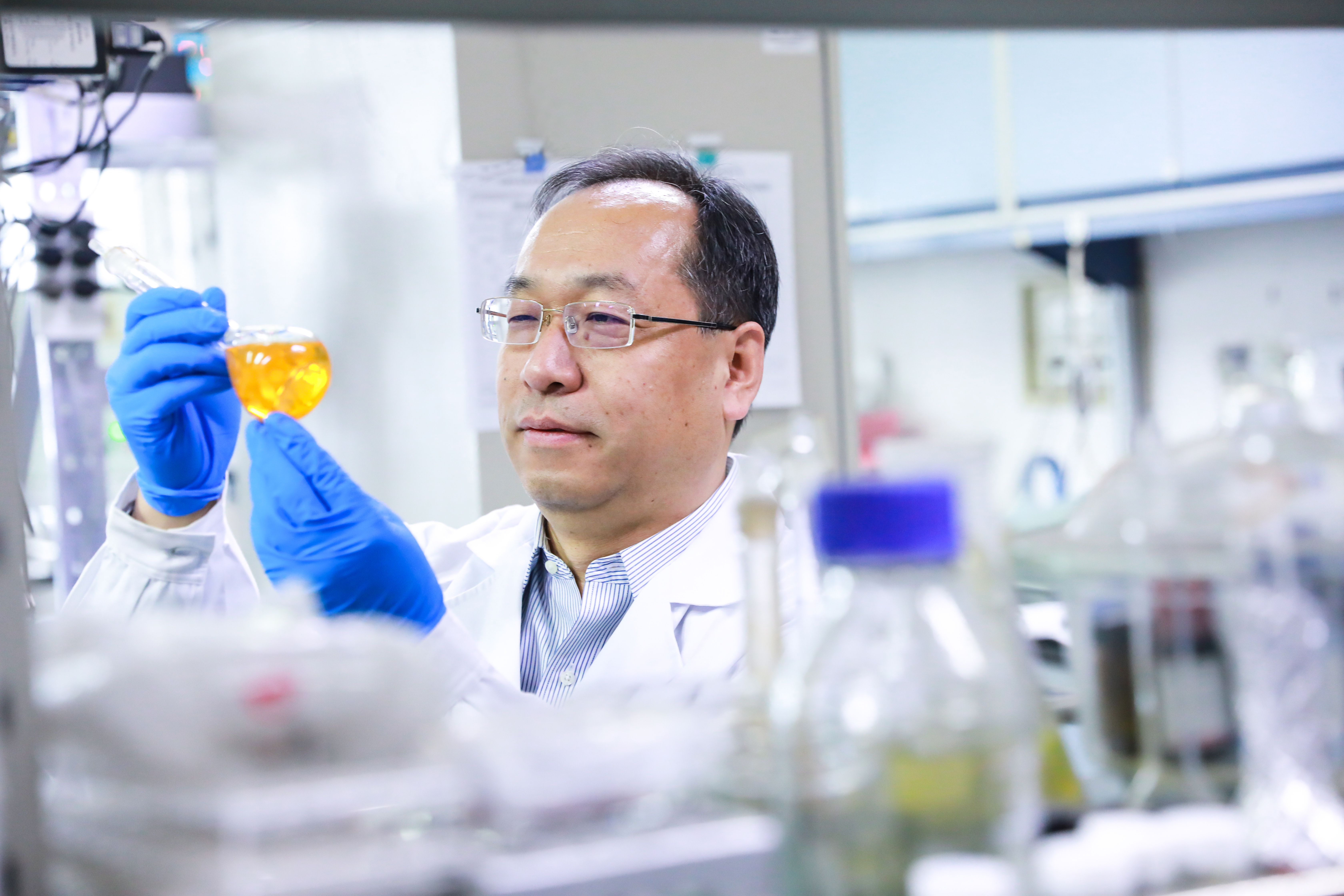[New Academicians 2019] Zhang Jin: An unwearied craftsman on carbon nanomaterials
Dec 26, 2019
Editor's Note: In November 2019, a total of seven academics from Peking University were elected as academicians, with five becoming members of the Chinese Academy of Sciences (CAS) and two being members of the Chinese Academy of Engineering (CAE). This article is the first installment in a five-part series featuring the academic career and research achievements of these newly elected academicians.
Peking University, Dec. 23, 2019: Zhang Jin, a Distinguished Professor of College of Chemistry and Molecular Engineering, Peking University (PKU), has been elected as a new member of the Chinese Academy of Sciences (CAS) in November 2019. Over the past decade, Professor Zhang and his team mates have made great achievements in controlled growth and enhanced spectroscopy of carbon nanomaterials, with over 260 papers published in many world-renowned journals, including Nature, Nature Materials, Advanced Materials, ACS Nano, etc.
Zhang Jin
Perseverance paves the way to knowledge: Step into the carbon world from a small village
Born in 1969, Zhang Jin spent his childhood at Wangjiayuan village in Ningxia, a province in northwestern China where many regions are still struggling with poverty, let alone five decades ago when the newly established Peoples’ Republic of China started from scratch in its push for modernization. Zhang depicted his school days as “a hard journey” in that period of scanty supplies. There was no teaching building or dormitory in the elementary school, and the classrooms were set in a cave, without teaching aids, desks and chairs. What’s more, Zhang and his classmates had to trudge over 5km to school and helped with farm work in their spare time. What this experience brought to him, however, was the never-give-up spirit that made him steadfast in his research later.
 Professor Zhang Jin (second from right in the second row) went back to his alma mater Zhangjia Mountain Primary School, along with Professor Liu Zhongfan from Peking University (third from left in the second row)
Professor Zhang Jin (second from right in the second row) went back to his alma mater Zhangjia Mountain Primary School, along with Professor Liu Zhongfan from Peking University (third from left in the second row)
After the college entrance examination, Zhang Jin was admitted to Lanzhou University, where he studied from 1988 to 1998 until he gained his Ph.D. in chemistry. During these years, Zhang also went to Peking University as a visiting student and joined Professor Liu Zhongfan’s team, who exerted the primary influence upon his life. “Professor Liu is an insightful and responsible scientist with a broad mind. Yet he is strict and patient with his teaching work, from which I learned a lot,” said Professor Zhang in the interview. “Every piece of paper published by our group is edited by him word by word.”
Zhang continued his post-doctoral research at Leeds University, the United Kingdom (UK). He seemed to be incompatible with his English colleagues, who led a slow, elegant nine-to-five lifestyle with two diurnal tea breaks additionally. Zhang was more like a workaholic, spending days and nights in his research all year round. “It may be lonely sometimes; but all the negative feelings were counteracted by ecstasy when new progress has been made in my experiments. In fact, I enjoyed such a fulfilling life.” After finishing the two-year plan in the UK, Zhang returned to China and gained a tenure in the College of Chemistry and Molecular Engineering, Peking University, where he has been working for 20 years since then.
“As the Top 1 University in China, PKU is unrival in talented people and research facilities, meaning that it will be easier for me to fulfill my dreams than in other Chinese universities,” said Professor Zhang in his office occupied by all kinds of professional books and journals of carbon nanomaterials.
To be pre-emptive in the high-tech areas: The nano-carbon field calls for craftsman’s spirit
It was the best of times, it was the worst of times, as Charles Dickens wrote in his famous A Tale of Two Cities. These words are never outdated even in this age, when carbon nanomaterials, especially graphene – a kind of carbon single-layer films that can be easily teared down from graphite by Scotch tape – attracted worldwide attention and soon become one of the hottest spots in the field of physics and materials science.
Graphene features a near-perfect honeycomb structure with many superiorities, including high electro- and heat-conductivity, great mechanical strength and special quantum effect at room temperature. All these indicate that this exquisite 2D material will have a huge potential in major high-tech fields. Sailings to this blue ocean, however, are entrapped by the mire of ineffective surveillance, disordered sprawl and low-end output that come from the instant-success-favored atmosphere.
Similarly, Zhang is a strong champion of this prosperous material. “We are moving towards a big-data era which will generate huge demands of wearable, flexible and intelligent devices. Compared to their current silicon-based counterparts, carbon materials are more flexible and tenacious while preserving other superior properties of silicon devices. That’s why it attracted me ever since 10 years ago. In fact, China has led the world in this field, both in materials and devices.”
 Professor Liu Zhongfan (left), Professor Mildred S. Dresselhaus (center), known as "Queen of Carbon", and Professor Zhang Jin (right) at Massachusetts Institute of Technology
Professor Liu Zhongfan (left), Professor Mildred S. Dresselhaus (center), known as "Queen of Carbon", and Professor Zhang Jin (right) at Massachusetts Institute of Technology
But he remains sober about the current graphene fever. “Few has paid attention to the core issue in graphene industry as a result of overemphasis on publications, which generates bubbles hiding the fact that the whole foundation was just built on the sand.” Zhang and his group are delving into relevant studies, hoping to make the most of graphene in upgrading major industrial products. “The whole carbon nanomaterial field calls for craftsman’s spirit. Only when we learn it well can we give full play to it, and thus out of restrictions, or even being pre-emptive in high-tech areas.”
Professor Zhang now holds the vice director of Beijing Graphene Institute (BGI), which he views as an effective engine that fuels the sound growth of graphene industry. BGI entails two major tasks, one is the basic research on graphene’s properties and techniques; the other is to find its proper applications in new-material manufacturing. “The BGI adopts a new mode of R&D Foundry. In short, we cooperate with various enterprises and solve what really troubles them. By doing so, we hope to find areas where graphene will be the ‘master card’ in industrial renewal.” Zhang and his BGI colleagues have come a long way in graphene’s applications, including super graphene glass, single-crystal graphene wafers and graphene photonic crystal fibre.
 Professor Zhang Jin (first from right) in the lab
Professor Zhang Jin (first from right) in the lab
When Greek mythology meets science: Every scientist holds a microphone in his hand
Reading papers with Professor Zhang as corresponding author, one may easily find some interesting yet concise items in the abstract, for example, Trojan catalysts. Zhang laughed when recalling these fantasies. “One may be adept at doing research, but may not be a master in introducing his achievements to the public. We called our catalysts ‘Trojan’ as a way to articulate our discoveries to the outside world.”
That was an exemplar of scientific publicity. Generally, the catalysts aggregate and deactivate at high temperature, unable to nucleate and prompt the extension of carbon nanotubes. Zhang and his student dealt with this problem by “hiding” catalyst precursors in substrates so that catalysts can be released “one-by-one” under proper conditions, “just like soldiers emerging from the Trojan horse in the Greek story.” Such mechanism might be inexplicable to outsiders not specialized in carbon materials, but with the help of Greek mythology, the abstruse theories were rewritten into transpicuous stories. Every scientist should hold a microphone in his hand, as Zhang highlighted, “only when one comprehends your research will he show interest in learning more about your work.”
 Professor Zhang Jin in his lab
Professor Zhang Jin in his lab
A mentor of strictness and inclusion: Teacher should be a dictionary for students
For Yu Yue, a Ph.D. candidate in Professor Zhang’s group, Zhang was an amiable teacher yet strict with his students. “He (Professor Zhang) is easy-going and casual most of the time, but when it comes to academic issues, things will become totally different.” In an informal debut before capstone presentation, Zhang found some errors in Yu’s slides. “He seemed more worried about my slides than me, and gave many useful proposals on how to exhibit my work in a more reasonable and clearer way.” Professor Zhang’s personality, in Yu’s mind, helped to create an enabling climate in his group.
Professor Zhang described his requirement to students as “to solve the problems, not just for the paper”. For every freshman in his group, Zhang will have a full discussion with them on their fields – where they will dive in for the next 5 years – based on their interest and knowledge. Zhang shared a story behind a paper published in Nature two years ago. The first author spent 7 years in one problem – to fulfill the controlled growth of carbon nanotubes. “Our goal is to find the key factors that impede us in tuning the tube structure, instead of pursuing publications in Nature. What matters most is your persistence in one problem. Once it’s been solved, the paper will follow naturally.”
Zhang puts the cultivation of talents high on his agenda in teaching. In PKU, where students are of the brightest minds in China, how to unlock their potential utmostly became critical. There are over 20 students in his group, including 8 postdoctoral fellows. Zhang provides full academic freedom for his students so that they can brainstorm as to create more possibilities in their research. In his mind, teacher should provide a broad stage for students where they can bring out their best, and act as a dictionary which students can consult at any moment. His educational preposition makes him popular among students, who polled him as one of PKU’s Most Popular Professors in 2017.
The enrollment as academician represents a new start in Zhang’s voyage in science. Looking forward, there are still plenty of problems and difficulties that encumber graphene’s transformation into key materials in high-tech, which means Zhang and his group still have a long and hard way to go. The bewitching world of carbon nanomaterials, with challenges and opportunities, is waiting for him, an unwearied craftsman, to explore.
Written by: Bai Qingwen
Edited by: Yan Shengnan, Zhang Jiang
Photo credit to: Li Xianghua, Xia Ziran




